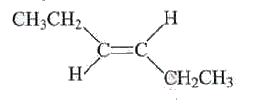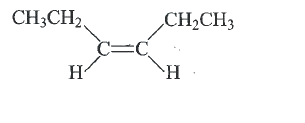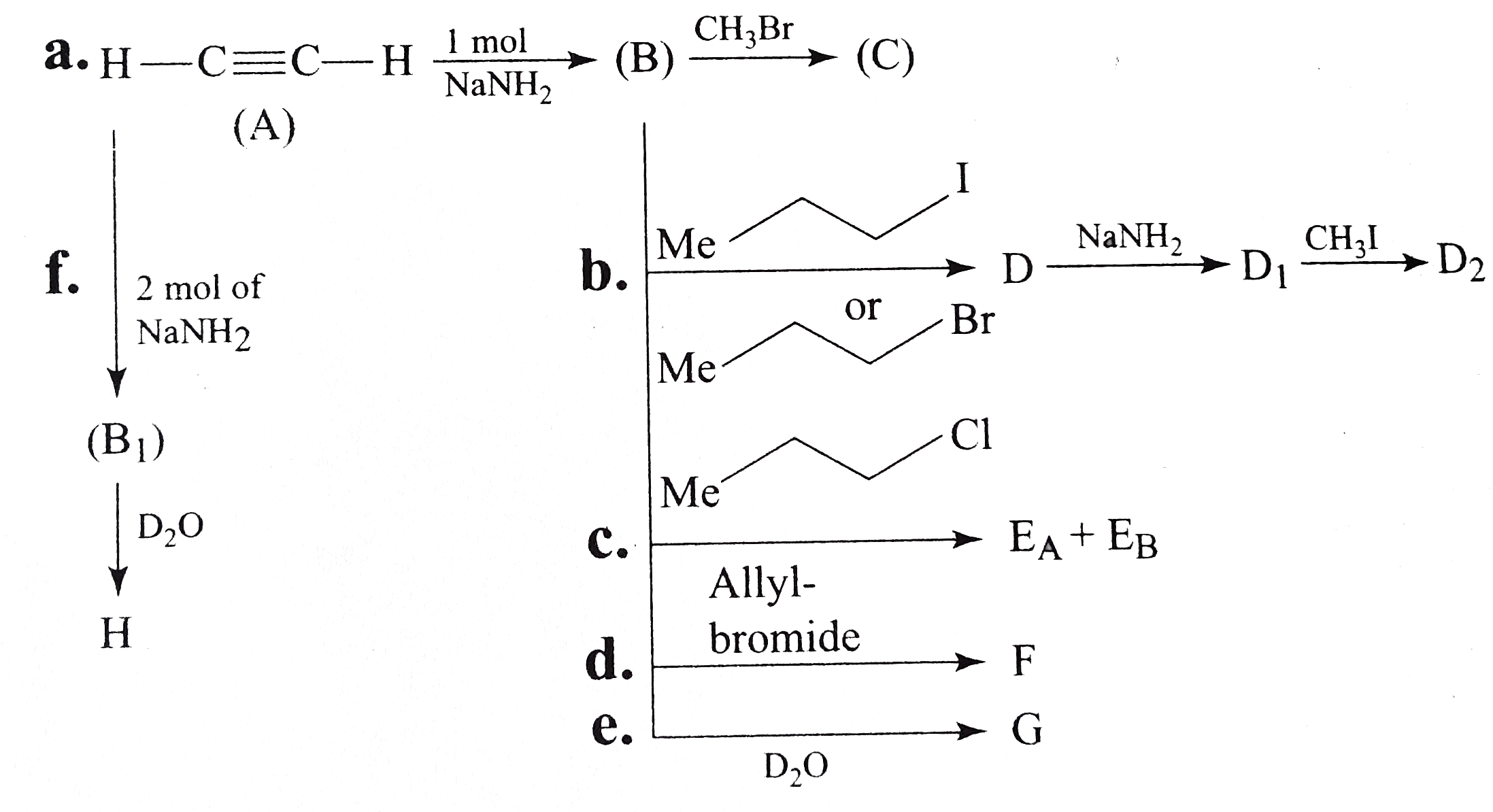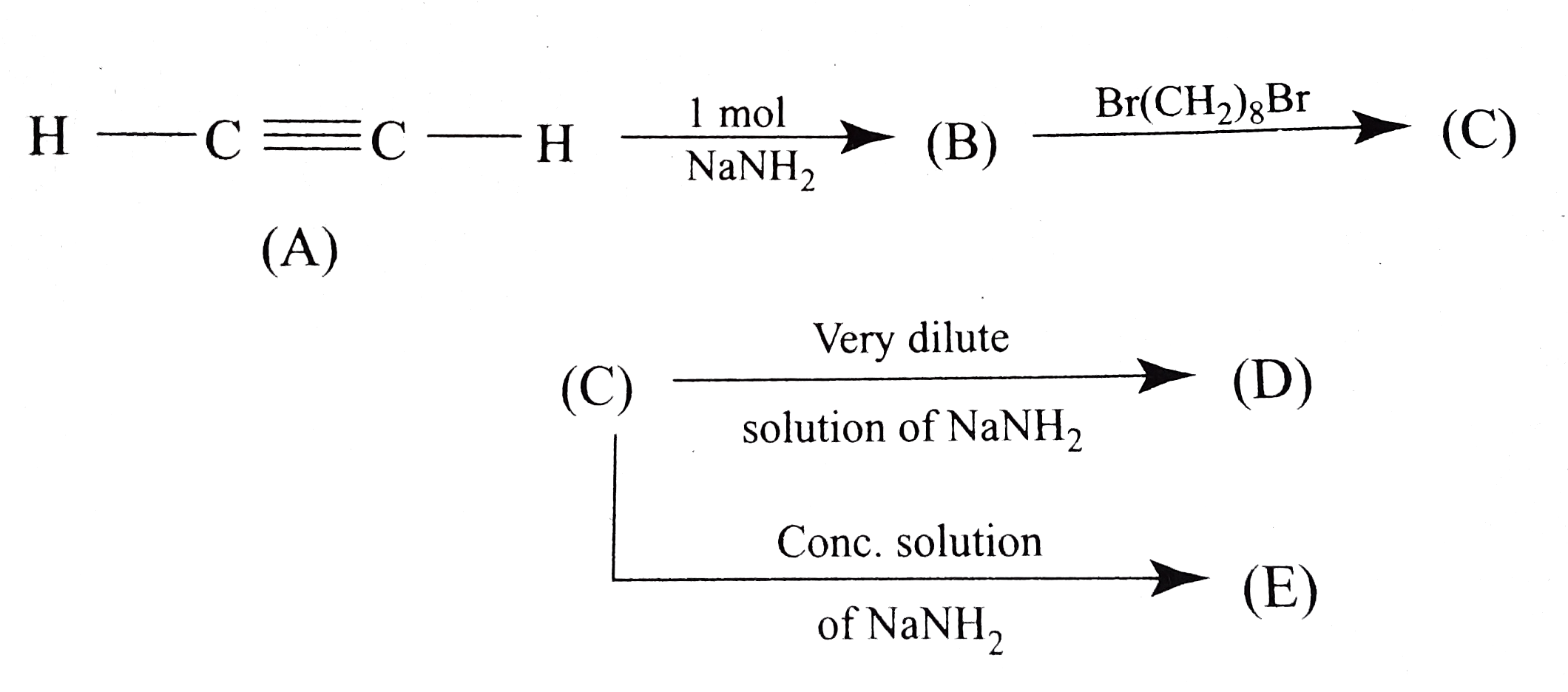In the reaction CH3−C≡C−H(i)NaNH2/NH3(l)−−−−−−−−−−−−−→(A)CH3−CH2−CH2−Br−−−−−−−−−−−−−→(B) The product B is
CH3−C≡C−CH2−CH2−CH3
CH3−CH=CH2
CH3−CH2−C≡C−CH2−CH3
CH3−CH=C=CH−CH2−CH3
The correct Answer is:A
To solve the given reaction step-by-step, we need to analyze the reactants and the reagents involved.
Step 1: Identify the starting material
The starting material is propyne, which is represented as:
CH3−C≡C−H
Step 2: Reaction with Sodium Amide (NaNH₂)
When propyne reacts with sodium amide (NaNH₂) in liquid ammonia (NH₃), it acts as a strong base. The sodium amide deprotonates the terminal hydrogen of propyne, leading to the formation of the sodium salt of propyne:
CH3−C≡C−Na+
This is product A.
Step 3: Nucleophilic Substitution with Alkyl Bromide
Next, we add an alkyl bromide, specifically butyl bromide (CH₃-CH₂-CH₂-Br), to product A. The negatively charged carbon (the terminal carbon of the alkyne) acts as a nucleophile and attacks the electrophilic carbon in the butyl bromide:
CH3−C≡C−+CH3−CH2−CH2−Br→CH3−C≡C−CH2CH2CH3+NaBr
Step 4: Final Product
The final product B, after the nucleophilic substitution, is:
CH3−C≡C−C−H2−CH2−CH3
This compound is a hexane derivative, specifically hex-2-yne.
Conclusion
Thus, the product B is:
Hex-2-yne
---
The starting material is propyne, which is represented as:
CH3−C≡C−H
When propyne reacts with sodium amide (NaNH₂) in liquid ammonia (NH₃), it acts as a strong base. The sodium amide deprotonates the terminal hydrogen of propyne, leading to the formation of the sodium salt of propyne:
CH3−C≡C−Na+
This is product A.
Next, we add an alkyl bromide, specifically butyl bromide (CH₃-CH₂-CH₂-Br), to product A. The negatively charged carbon (the terminal carbon of the alkyne) acts as a nucleophile and attacks the electrophilic carbon in the butyl bromide:
CH3−C≡C−+CH3−CH2−CH2−Br→CH3−C≡C−CH2CH2CH3+NaBr
The final product B, after the nucleophilic substitution, is:
CH3−C≡C−C−H2−CH2−CH3
This compound is a hexane derivative, specifically hex-2-yne.
Thus, the product B is:
Hex-2-yne
Similar Questions
Knowledge Check
CH3CH2C≡ChNaNH2/NH3(l)−−−−−−−−−−→CH3CH2Br−−−−−−→Li,NH3(l)−−−−−−→
ACH3CH2CH=CH−CH3BCH3CH2CH=CH2C D
D
CH3−C≡C−HNaNH2−−−−→CH31−−→Li/Liq.NH3−−−−−−−→
View SolutionCH≡CHNaNH2−−−−→[A]CH3Br−−−→[B]
View SolutionIn the given reaction CH3−CH2−C≡N(i)CH3MgCl−−−−−−−−→[X] [X] will be
View SolutionComplete the following reactions: a. H−C(A)≡C−H1mol−−−−→NaNH2(B)CH3Br−−−→(C)

g. H−C≡C(A)−H1mol−−−−→NaNH2(B)Br(CH2)8Br−−−−−−−−→(C)

View SolutionIn the given reaction
CH3−Br∣CH−CH2−COOHNaOH−−−→(X).
'X' will be
View SolutionConsider the following sequence of reactions
C2H5C≡CHCH3MgBr−−−−−→A(1)HCHO−−−−−−→(2)H2O+B
The product (B) is
View SolutionIn the given reaction CH3−CH2−Br∣CH−CH=CH2Alc.KOH/Δ−−−−−−−−→(X) X will be
View Solution
